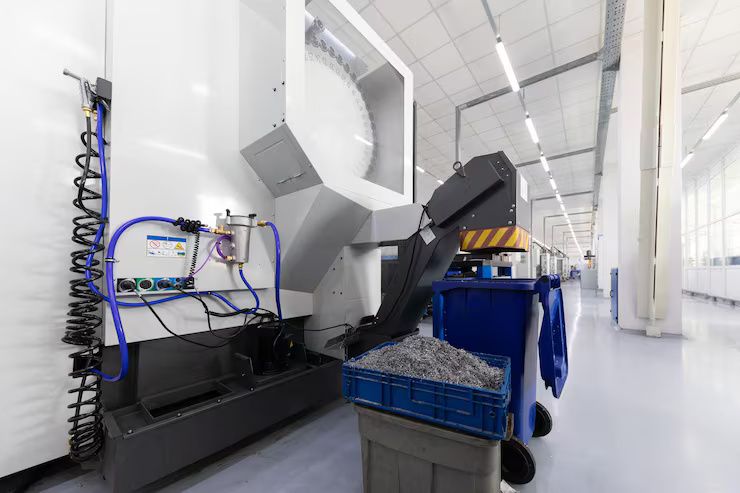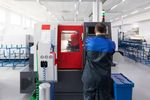
Guide to Modern Plastic Shaping Machines: Learn Functions, Processes, and Industrial Applications
Modern plastic shaping machines are central to manufacturing everyday products, from household containers to automotive components and medical devices. These machines transform raw polymers into usable forms through controlled heating, pressure, and shaping systems. Their development is linked to advancements in polymer science, automation, and digital monitoring, making plastic production faster, more accurate, and more adaptable to material changes.
Plastic shaping machines exist because industries require high-volume, reliable, and uniform production of parts with specific shapes and structural properties. Without them, mass manufacturing of lightweight, durable, and customized products would be much more time-consuming and inconsistent.

Understanding Why Plastic Shaping Machines Matte
Plastic materials are widely used because they are lightweight, moldable, resistant to corrosion, and cost-efficient for mass production. Plastic shaping machines support several key sectors, including packaging, construction, healthcare, automotive, aerospace, and consumer goods.
Their importance lies in:
-
Consistent product quality across large production volumes
-
Customization capabilities for complex designs
-
Material efficiency, reducing waste during production
-
Support for advanced materials, such as biodegradable or recycled polymers
These machines help industries meet growing demands for durable and sustainable products while improving production timelines and reducing errors.
Recent Trends and Developments
The last few years have seen notable changes in how plastic shaping technologies are used. These updates are influenced by sustainability goals, digital factory systems, and evolving industrial requirements.
Some trends observed between 2023 and 2025 include:
-
Sustainable Polymer Processing: Manufacturers are using bioplastics and recycled resins more often. By early 2024, several packaging and consumer brands reported transitioning to recycled PET and bio-based polymers.
-
Smart Automation and IoT Monitoring: Many shaping machines now include sensors and digital monitoring dashboards to track temperature, pressure, and energy usage in real time.
-
Energy-Efficient Heating Systems: Extrusion and injection molding systems increasingly use induction heating and improved insulation to reduce energy consumption.
-
3D Printing and Rapid Prototyping Integration: Before mass production, product designs are now tested through polymer additive manufacturing to reduce trial-and-error during tooling.
-
Micro-Molding Techniques: Used particularly in electronics and medical device manufacturing for components that require extremely precise geometric control.
These advancements support industries in meeting sustainability standards, improving efficiency, and managing costs effectively.
Regulatory Factors and Policy Context
Regulatory frameworks impact how plastic shaping processes are carried out, especially related to material sourcing, environmental impact, and recycling goals.
Key standards and guidelines often involved include:
-
Material Safety Regulations: Ensuring polymers used in food packaging, medical devices, and household products meet health and safety standards.
-
Environmental Requirements: Many regions encourage or mandate recycling usage, reduction of single-use plastics, and waste management compliance.
-
Energy Efficiency Targets: Factories using large shaping machinery may fall under national or sector-based energy performance requirements.
-
Workplace Safety Standards: Operators must follow machine safety rules, including guard mechanisms, temperature hazard controls, and training certifications.
Government programs also support recycling technology improvements and research into biodegradable materials. This influences machinery design, particularly in systems that must handle varying types of polymer feedstock.
Common Types of Plastic Shaping Machines and Their Functions
| Machine Type | Primary Function | Typical Applications | Key Process Feature |
|---|---|---|---|
| Injection Molding Machine | Produces complex, high-precision molded parts | Automotive components, medical tools, electronics | Molten plastic injected into closed mold |
| Extrusion Machine | Creates continuous shapes or sheets | Pipes, profiles, films, insulation | Plastic pushed through a shaped die |
| Blow Molding Machine | Forms hollow containers | Bottles, tanks, drums | Air pressure expands heated plastic inside mold |
| Thermoforming Machine | Shapes sheets into detailed forms | Packaging trays, containers | Heated sheet formed against mold by vacuum/pressure |
| Compression Molding Machine | Uses heat and pressure for large or reinforced parts | Electrical housings, furniture components | Polymer placed in open mold and pressed closed |
These machines may operate with different types of polymers, including polyethylene, polypropylene, PET, PVC, and engineered plastics used in structural applications.
Tools and Resources for Learning and Planning
Individuals and industries exploring plastic shaping technologies can refer to the following:
-
Polymer Material Databases: MatWeb, CES EduPack, Polymer Database
-
Industrial Standards & Guidelines: ISO 1873 (Polypropylene), ISO 178 (Plastic flexural properties)
-
Educational Platforms: Coursera, edX, MIT OpenCourseWare (polymer engineering modules)
-
Simulation and Process Modeling Software: Moldflow, SolidWorks Plastics, ANSYS Polyflow
-
Lifecycle and Sustainability Assessment Tools: OpenLCA, GaBi Systems
These resources help in material selection, process planning, product design, and evaluating environmental impact.
Frequently Asked Questions (FAQs)
What is the main purpose of plastic shaping machines?
Their purpose is to convert raw plastic materials into products with specific shapes and functional characteristics using automated molding, forming, or extrusion processes.
Which industries rely most on these machines?
Major users include packaging, automotive manufacturing, medical device production, consumer products, building materials, and electronics.
Are recycled plastics compatible with shaping machines?
Yes, but the material must be cleaned, sorted, and processed correctly to maintain consistency. Some machines are optimized to handle recycled polymer blends.
What determines which shaping process is used?
Key factors include product size, complexity, required strength, material type, surface finish needs, and production volume.
How is sustainability influencing plastic shaping?
Manufacturers are increasing the use of recycled materials, adopting energy-efficient heating systems, and designing products for improved recyclability.
Conclusion
Modern plastic shaping machines are essential to producing a wide range of goods that support daily life and industrial infrastructure. Their capabilities continue to evolve as industries adopt smarter automation, eco-friendly materials, and digital monitoring tools. Understanding how these machines work and where they apply helps businesses and individuals make informed decisions about material use, product design, and sustainable manufacturing strategies.






